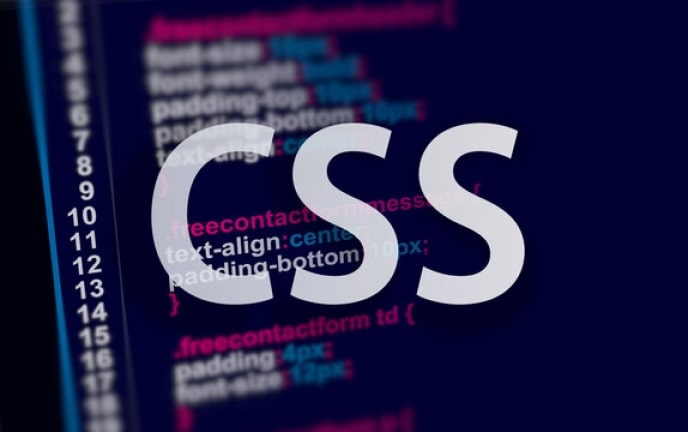1 What is CSS?
CSS stands for Cascading Style Sheets. It is a stylesheet language used to define the visual presentation and layout of HTML documents. CSS separates the design aspects of a webpage from its structure, allowing developers to control the appearance of various elements. By applying CSS styles, such as colors, fonts, margins, and positioning, websites can be customized and made visually appealing.
CSS works by selecting HTML elements and applying specific rules to them, enabling consistent and cohesive design across multiple web pages. It plays a crucial role in web development, enhancing the user experience and facilitating the creation of modern and responsive websites.
2 What is an external style sheet? How would you link to it?
An external style sheet is a separate CSS file that contains all the style rules for a website. It allows you to define styles in one central location and link them to multiple HTML documents. This approach promotes consistency and makes it easier to manage and update styles across the entire website
To link an external style sheet to an HTML document, you need to use the <link> element in the HTML <head> section. The <link> element has several attributes, including:
rel: Specifies the relationship between the HTML document and the linked file. For an external style sheet, the value should be set to “stylesheet”.
type: Specifies the MIME type of the linked file. For CSS, the value should be set to “text/CSS”.
href: Specifies the path or URL of the external style sheet file.
3. What are the advantages and disadvantages of using external style sheets?
The following are the benefits of utilising external style sheet
A single file can be used to organize the styles of several documents.
Classes may be created for usage on a variety of HTML element types in various forms of the site.
To apply styles in complicated situations, methods such as selectors and grouping can be used.
The following are the drawbacks of utilising external style she
To import style information for each file, an additional download is required.
The file’s execution might be delayed until the external style sheet is loaded.
We must test websites with many browsers when integrating style sheets to ensure compatibility.
4. What are the benefits and drawbacks of embedded style sheets?
The following are the benefits of embedded style sheets:
It is possible to construct classes for usage on various tag types in a document using embedded style sheets.
In contrast to external style sheets, no further download is required to import the information in embedded style sheets.
The following are the disadvantages of embedded style sheets:
Controlling the styles of many files from a single file is not possible using embedded style sheets.
5. What is a CSS selector?
A CSS selector is part of a CSS set that determines which material deserves a given style. A CSS selector is also known as a link between the stylesheet and the HTML files. A CSS selector allows you to select and manipulate HTML components. CSS selectors are used to find or select HTML components based on their id, class, type, and so forth.
6. What is tweening?
Tweening, often referred to as “in-betweening,” is the act of inserting frames in between two pictures to give the impression that the first image flows smoothly into the second. All kinds of animations employ it as a crucial technique. You may identify certain items in a picture and specify how they will move and alter throughout the tweening process using advanced animation software.
7. What is the box model in CSS? Which CSS properties are a part of it?
The box model in CSS is a fundamental concept that defines how elements are rendered and structured on a webpage. It describes the content area, padding, border, and margin of an element.
The box model consists of the following components:
Content Area: It represents the actual content of an element, such as text, images, or other HTML elements. The content area is defined by the width and height properties.
Padding: It creates space between the content area and the element’s border. The padding can be set using the padding property and its related properties like padding-top, padding-right, padding-bottom, and padding-left.
Border: It is a line that surrounds the content area and padding. The border can be styled using the border property and its related properties like border-width, border-style, and border-color.
Margin: It creates space between the element’s border and adjacent elements. The margin can be set using the margin property and its related properties like margin-top, margin-right, margin-bottom, and margin-left.
CSS properties related to the box model include:
width and height: Specifies the width and height of the content area.
padding: Sets the padding values for all four sides of the element.
border: Defines the width, style, and color of the element’s border.
margin: Sets the margin values for all four sides of the element.
box-sizing: Determines how the total width and height of an element are calculated, including or excluding padding and border.
Understanding the box model is crucial for controlling the layout and spacing of elements on a webpage. By manipulating these properties, developers can create visually appealing designs and ensure proper alignment and spacing between elements.
8. How can you include CSS in a web page?
To include CSS on a web page, you have several methods available:
Inline CSS:
You can apply CSS directly to an HTML element using the style attribute.
Example: <h1 style=”color: blue;”> Hello World</h1>
Internal CSS:
You can include CSS rules within the <style> tags in the HTML <head> section.
External CSS:
Create a separate CSS file with a.css extension, and link it to your HTML document using the <link> tag.
The href attribute should specify the path or URL to your CSS file.
Using an external CSS file is the recommended approach, as it promotes modularity, reusability, and separation of concerns. It allows you to define styles in a centralized file and link it to multiple HTML documents, ensuring consistent styling across your website.
9. What are the different types of selectors in CSS?
In CSS, there are several types of selectors that allow you to target specific HTML elements and apply styles to them. The different types of selectors inclu
Element Selector:
Targets elements based on their HTML tag name.
Example: p targets all <p> elements.
Class Selector:
Targets elements based on the class attribute value.
Example: .my-class targets all elements with class=”my-class”.
ID Selector:
Targets a specific element based on its unique id attribute value.
Example: #my-id targets the element with id=”my-id”.
Universal Selector:
Targets all elements in the document.
Example: * targets all elements.
Attribute Selector:
Targets elements based on their attribute values.
Example: [type=”text”] targets elements with type=”text”.
Descendant Selector:
Targets elements that are descendants of another element.
Example: div p targets all <p> elements that are descendants of <div> elements.
Child Selector:
Targets elements that are direct children of another element.
Example: div > p targets all <p> elements that are direct children of <div> elements.
Adjacent Sibling Selector:
Targets an element that is immediately preceded by another element.
Example: h2 + p targets the <p> element that immediately follows an <h2> element.
General Sibling Selector:
Targets elements that are siblings of another element.
Example: h2 ~ p targets all <p> elements that are siblings of an <h2> element.
Pseudo-classes:
Targets elements based on a specific state or condition.
Example: : hover targets an element when it is being hovered over by the mouse.
Pseudo-elements:
Targets specific parts of an element’s content.
Example: ::before inserts content before an element’s content.
These different types of selectors provide flexibility and specificity in applying styles to specific elements or groups of elements on a webpage. By understanding and utilizing these selectors effectively, you can create targeted and visually appealing CSS styles for your HTML elements.
10. What is a CSS preprocessor? What are SASS, LESS, and Stylus? Why do people use them?
A CSS preprocessor is a scripting language that extends the capabilities of CSS. It allows developers to write CSS code in a more organized and efficient manner, offering additional features and functionality that are not available in standard CSS.
SASS (Syntactically Awesome Style Sheets), LESS (Leaner Style Sheets), and Stylus are popular CSS preprocessors. They introduce features like variables, nesting, mixins, functions, and more, which simplify and streamline the CSS development process.
People use CSS preprocessors for several reasons:
Modularity and Reusability: CSS preprocessors enable the creation of modular and reusable code by using features like variables and mixins. This helps in reducing code duplication and maintain consistency throughout the stylesheets.
Efficiency and Productivity: Preprocessors offer features like nesting and mixins, allowing developers to write cleaner and more concise code. This improves productivity by reducing the amount of repetitive and boilerplate CSS code.
Code Organization: Preprocessors allow the organization of CSS into smaller, manageable files. They provide the ability to split stylesheets into partials, making it easier to maintain and update specifi sections of the codebase.
Improved Readability: CSS preprocessors introduce a more readable syntax, allowing developers to write code in a way that closely resembles a programming language. This enhances code readability and makes it easier to understand and maintain.
Advanced Features: CSS preprocessors offer advanced features such as mathematical operations, conditionals, loops, and color manipulation functions. These features provide flexibility and allow for more dynamic and powerful stylesheets.
Overall, CSS preprocessors enhance the development workflow by providing a range of features and improvements over standard CSS. They offer more control, efficiency, and maintainability, making them a preferred choice for many developers and teams working on complex or large-scale projects.





